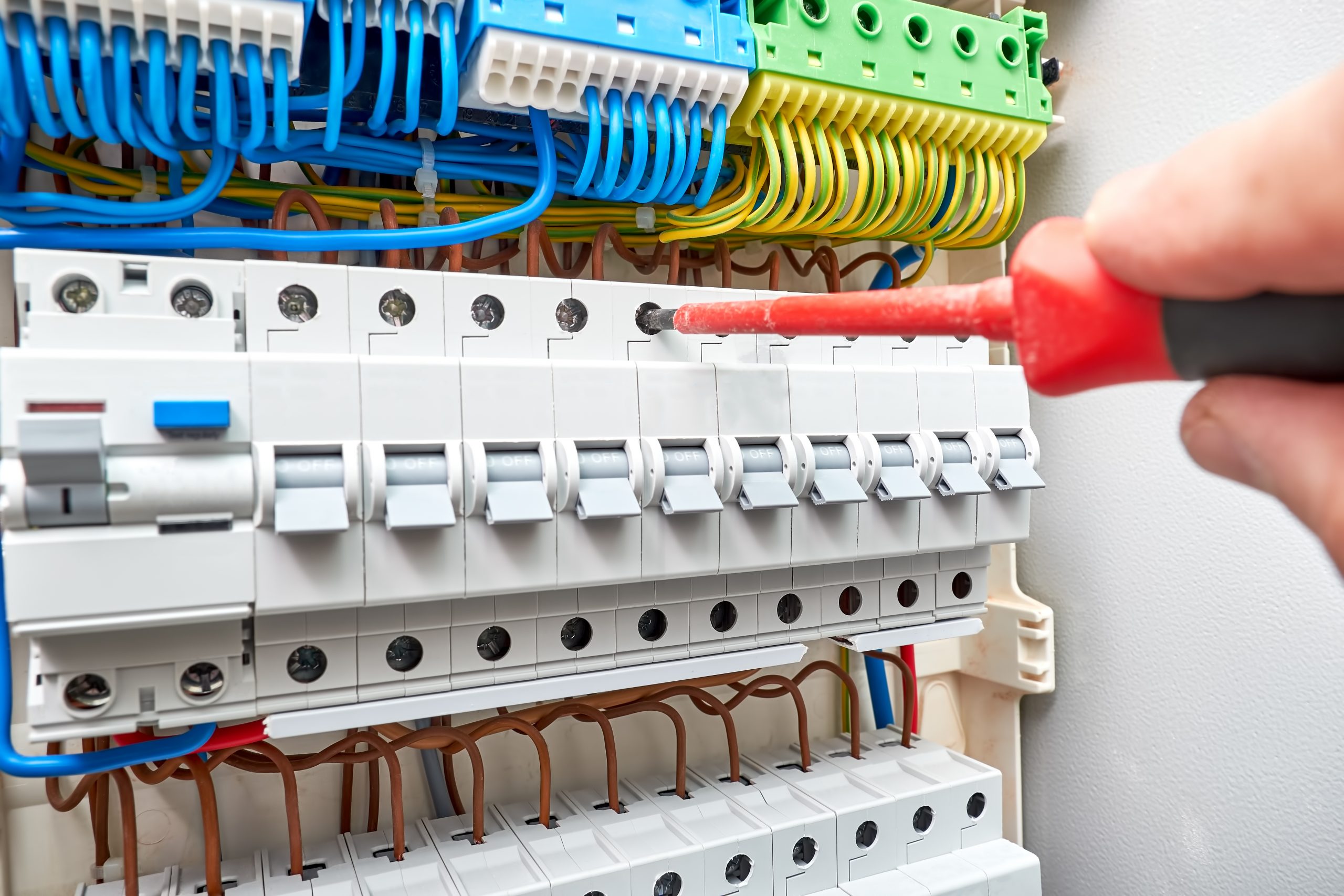
Service Example
Upgrading an electrical fuseboard (also known as a consumer unit or distribution board) is an important task that ensures your home or building’s electrical system is safe, up to code, and capable of handling modern electrical loads. Here’s an overview of the process:
Reasons for Upgrading:
- Old Fuseboard: Older fuseboards with rewireable fuses or ceramic fuses may no longer meet safety standards and could present a fire risk.
- Increased Electrical Demand: With more electrical appliances, devices, and modern technologies (like electric vehicles), an upgraded fuseboard is needed to handle higher loads.
- Circuit Protection: Upgrading to modern circuit breakers (MCBs or RCBOs) provides better protection and makes isolating faults easier.
- RCDs (Residual Current Devices): These protect against electric shocks and are a required upgrade for modern safety standards.
Steps for Upgrading:
- Assessment: A licensed electrician will assess the current fuseboard, the number of circuits, and the overall condition of the electrical system.
- Choosing the Right Fuseboard: The electrician will select a new consumer unit that meets current safety standards and can accommodate your electrical needs. This includes having enough space for additional circuits if necessary.
- Replacement Process:
- Power Isolation: The main power supply is switched off to prevent accidents.
- Old Fuseboard Removal: The old unit is disconnected and removed.
- Wiring and Connections: The new consumer unit is installed, and circuits are rewired if necessary. Circuit breakers and RCDs are added.
- Testing: After installation, the new fuseboard is tested to ensure everything works correctly and safely.
- Certification: The electrician will provide an Electrical Installation Certificate, confirming that the work complies with local regulations.
Types of Upgrades:
- MCB Upgrade: Replacing traditional fuses with modern miniature circuit breakers (MCBs), which are easier to reset and provide better protection.
- RCDs or RCBOs: These are essential for electrical safety. RCDs protect against electrical shocks, while RCBOs combine the protection of an MCB and RCD in one device, providing more comprehensive safety.
- Surge Protection: In some cases, surge protection can be included to protect against power surges or lightning strikes.
- Smart Fuseboards: Some modern consumer units come with smart technology, allowing for remote monitoring and control of circuits.
Cost of Upgrading:
The cost varies depending on:
- The type and size of the fuseboard.
- The complexity of the installation.
- Any additional work needed, such as rewiring or upgrading circuits.
Typical costs in the UK for an upgrade might range from £300 to £800+, depending on the specifics.
Safety Considerations:
Upgrading a fuseboard is not a DIY job. It must be done by a certified electrician (usually registered with a regulatory body like NICEIC, NAPIT, or similar) to ensure safety and compliance with regulations.
If you’re considering an upgrade, it’s a good idea to consult a qualified electrician to get an assessment and a quote for the work!
